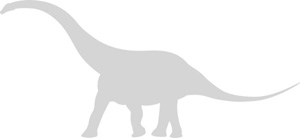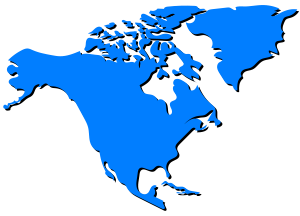Ahvaytum bahndooiveche
Every month, 100,000 readers use the Dinosaur Database, but we receive no support from you. Developing and updating the database requires a lot of work. If you want it to remain open and be updated, please support us via the "Buy us a coffee" button available on every page or via the Support page.
Dinosaur: Ahvaytum bahndooiveche

| Length*: | 1.2 m | 3.9 ft |
| Weight*: | 10 kg | 22 lb |
*The largest known specimen
Period
Epoch: Late Triassic
Stage: Carnian
Years: 237–227 Ma
Details
Status: valid
Author: Lovelace et al.
Year: 2025
Distribution
Area: North America
Country: USA
Region: Wyoming
Formation: Popo Agie
Classification
Dinosauria
Saurischia
Eusaurischia
Sauropodomorpha
Saturnaliidae
Description
Ahvaytum bahndooiveche
Ahvaytum bahndooiveche: The Ancient Sauropodomorph of the Northern Hemisphere
Ahvaytum bahndooiveche is a newly identified species of early sauropodomorph dinosaur from the Late Triassic Carnian epoch, approximately 230 million years ago. This dinosaur is the first definitive evidence of a Carnian-aged sauropodomorph from Laurasia (the northern supercontinent) and represents a significant finding in understanding the early dispersal of dinosaurs. The name Ahvaytum comes from the Shoshone word “Anva·tum,” meaning “long ago,” while bahndooiveche translates to “dinosaur.” The fossils were discovered in the Popo Agie Formation near the Garrett’s Surprise locality in Wyoming, USA.
Physical Characteristics
The holotype of Ahvaytum bahndooiveche consists of an isolated left astragalus (ankle bone) measuring 3.5 cm in width. It features several traits characteristic of sauropodomorphs, such as:
- A roller-shaped distal surface.
- A wide tibial facet that does not extend to the anteromedial corner.
- A medial fossa opening distally, considered autapomorphic for the species.
Referred material includes the proximal end of a left femur, which displays saurischian traits like an offset femoral head and a concave emargination. The histology of the femur suggests the individual was not fully grown at the time of death but had reached a later ontogenetic stage.
Diet and Feeding Habits
As an early sauropodomorph, Ahvaytum bahndooiveche was likely herbivorous, feeding on low-lying vegetation. Its small size compared to later sauropodomorphs suggests a less specialized diet during its evolutionary stage.
Habitat and Distribution
The fossils were found in the lower Popo Agie Formation, part of the Chugwater Group, in Wyoming. This formation represents a semi-arid floodplain environment during the Carnian, characterized by rivers and seasonal wet and dry periods. The discovery of Ahvaytum bahndooiveche alongside other fossils, such as silesaurids and metoposaurid amphibians, highlights the region’s diverse ecosystem.
Behavior and Social Structure
There is no direct evidence of social behavior for Ahvaytum bahndooiveche. However, as a small-bodied dinosaur in a predator-rich environment, it may have lived in groups for protection or relied on speed and agility to evade predators.
Discovery and Research
The holotype astragalus and referred femur were excavated from the Garrett’s Surprise locality in 2024. High-precision radioisotopic dating places the fossils at approximately 230 million years old, contemporaneous with some of the oldest known Gondwanan dinosaurs. The findings challenge previous hypotheses that dinosaurs originated exclusively in high-latitude Gondwana, suggesting instead a more widespread early geographic distribution.
Significance and Interesting Facts
- Ahvaytum bahndooiveche is the oldest known dinosaur from Laurasia, bridging a 6–10-million-year gap between Gondwanan and Laurasian records.
- The species’ name honors the Eastern Shoshone people and their language, marking an important collaboration between scientists and Indigenous communities.
- Its discovery demonstrates that early sauropodomorphs adapted to equatorial climates, expanding our understanding of dinosaur ecology and evolution.
Locations
Sources
Material: Holotype: Left astragalus (ankle bone): Catalog number UWGM 1975, featuring unique anatomical characteristics such as a medial fossa opening distally and a roller-shaped distal surface. Referred Material: Proximal end of a left femur: Catalog number UWGM 7549, displaying saurischian traits such as an offset femoral head and a concave emargination, consistent with early sauropodomorph dinosaurs.
References: Lovelace, David M; Kufner, Aaron M; Fitch, Adam J; Curry Rogers, Kristina; Schmitz, Mark; Schwartz, Darin M; LeClair-Diaz, Amanda; St.Clair, Lynette; Mann, Joshua; Teran, Reba (2025-01-01) (2025). "Rethinking dinosaur origins: oldest known equatorial dinosaur-bearing assemblage (mid-late Carnian Popo Agie FM, Wyoming, USA)



